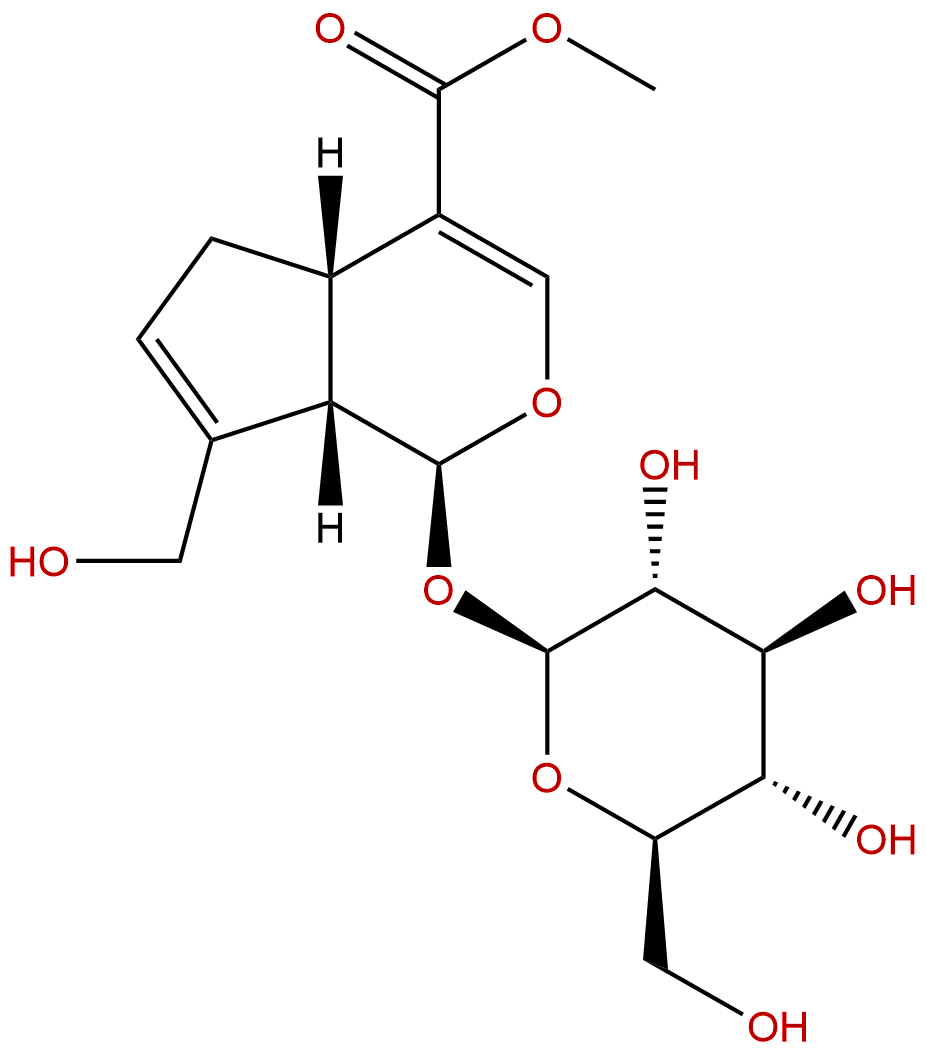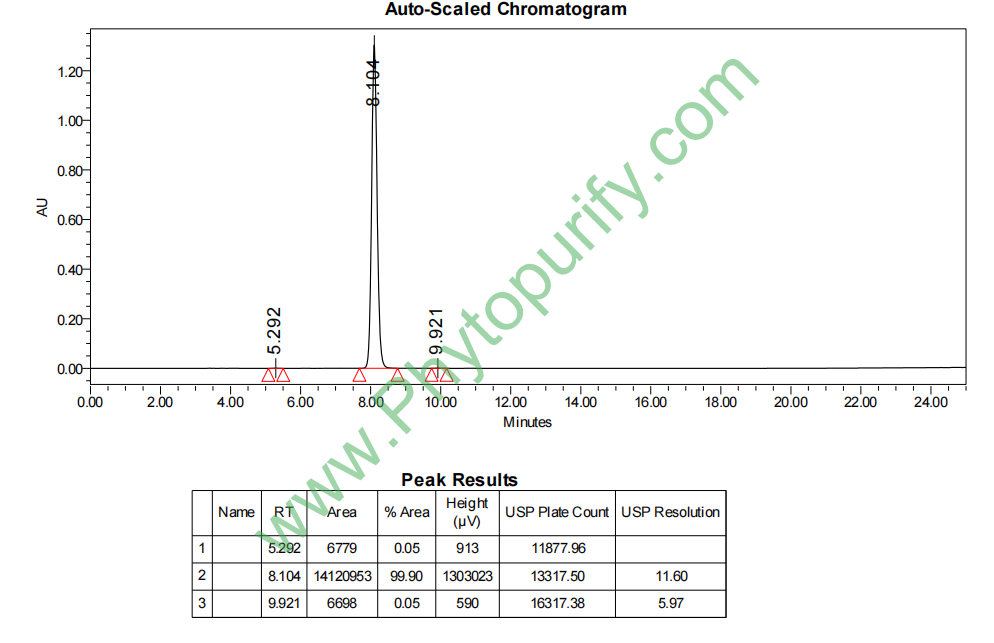
GeniposideCAS No.:24512-63-8
|
||||||||||
 |
|
|
||||||||

| Catalogue No.: | BP0632 |
| Formula: | C17H24O10 |
| Mol Weight: | 388.369 |
Product name: Geniposide
Synonym name: Genipin 1-glucoside; Jasminoidin
Catalogue No.: BP0632
Cas No.: 24512-63-8
Formula: C17H24O10
Mol Weight: 388.369
Botanical Source: Gardenia jasminoides and Garrya elliptica
Physical Description: Powder
Type of Compound: Iridoids
Purity: 95%~99%
Analysis Method: HPLC-DAD or/and HPLC-ELSD
Identification Method: Mass, NMR
Packing: Brown vial or HDPE plastic bottle
Storage: Store in a well closed container, protected from air and light. Put into refrigerate or freeze for long term storage.
Whenever possible, you should prepare and use solutions on the same day. However, if you need to make up stock solutions in advance, we recommend that you store the solution as aliquots in tightly sealed vials at -20℃. Generally, these will be useable for up to two weeks.
The product could be supplied from milligrams to grams, up to kilograms
Inquire for bulk scale.
Descriptions:
Geniposide, a major iridoid found in fruit, is widely used in Asian countries for its anti-inflammatory, and anti-apoptotic activities, the anti-apoptotic activities is due to its modulation of and -related factors (p53, Bax, Bcl-2 and Caspase-3) in LPS-induced mouse mastitis. [1]
Geniposide, an agonist for GLP-1 receptor, regulates expression of anti-oxidative proteins including HO-1 and Bcl-2 by activating the transcriptor of p90RSK via MAPK signaling pathway in PC12 cells.[2]
Geniposide is highly effective in inhibiting acute lung injury and may be a promising potential therapeutic reagent for acute lung injury treatment.[3]
Geniposide inhibits high glucose-induced cell adhesion through the NF-κB signaling pathway in human umbilical vein endothelial cells.[4]
Geniposide may attenuate memory deficits through the suppression of mitochondrial oxidative stress, thus, geniposide may be a potential therapeutic reagent for halting and preventing Alzheimer's disease progress.[5]
References:
[1] Song X, Guo M, Wang T, et al. Life Sci, 2014, 119(1–2):9-17.
[2] Liu J, Fei Y, Zheng X, et al. Neurochem Int, 2007, 51(6-7):361-9.
[3] Fu Y, Liu B, Liu J, et al. Int Immunopharmacol, 2012, 14(4):792-8.
[4] Wang G F, Wu S Y, Wei X, et al. Acta Pharmacol Sin, 2010, 31(8):953-62.
[5] Lv C, Liu X, Liu H, et al. Curr Alzheimer Res, 2014, 11(6):580-7.
[6] LIAO Yan-hua, HAN Feng, MA Li. Drugs & Clinic, 2013, 28(2):191-193.
HPLC of Geniposide
